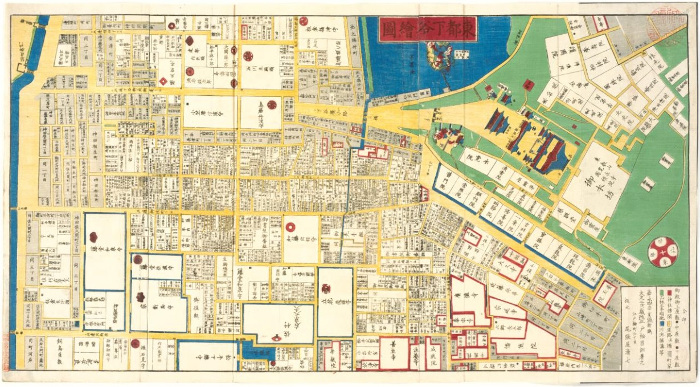Part 2. Edo's Calamities

Part 2 covers the Great Ansei Earthquake and major outbreaks of infectious diseases such as measles and cholera in Edo.
The Great Ansei Earthquake of October 1855 is said to have resulted 10,000 fatalities, as well as causing immense damage to the city of Edo. Combined with the uncertainty permeating society at the time, prompted by events such as the arrival of Commodore Perry, the earthquake had a huge impact on the people of Edo, and numerous written records and printed handouts were produced to chronicle their experiences. A variety of versions were produced of namazu-e, colored woodblock prints on the theme of earthquakes and the giant catfish said to cause them.
This was also a time of outbreaks measles, cholera, and other infectious diseases that claimed numerous lives and prompted the Shogunate to adopt relief measures such as the distribution of rice to those affected. Bovine smallpox vaccines were also administered widely as a measure against smallpox infection.
1 The Great Ansei Earthquake
21 List of Goods Donated to Disaster Relief Shelters
Tokyo Shiryō Collection 0277-16
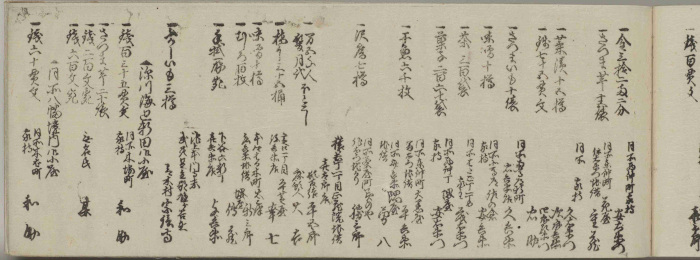
This is an itemized list of goods provided by wealthy townsfolk at the time of the Ansei Earthquake. It lists relief supplies such as rice, miso, and tea, as well as footwear, medicine for treating bruises, and other items. The Shogunate's aid efforts for disaster victims included the establishment of temporary shelters known as osukui goya, as well as provision of meal services and relief rations of rice. At the same time, mainly in the central city areas, it became customary for wealthy private households to donate cash and food. These were equivalent to the relief funds and aid supplies of the present day. (11.4×30.3cm)
22 Great Earthquake and Fires in Kanto
Tokyo Shiryō Collection 0277-C56
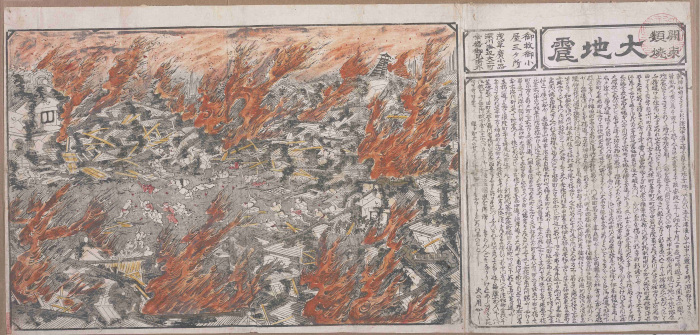
This is a kawaraban news-sheet printed immediately after the Ansei Earthquake, outlining the establishment of temporary relief shelters known as osukui goya. The right side provides detailed information on the location of osukui goya and the damage suffered district by district, as well as depicting buildings that collapsed in the earthquake and people fleeing the fires. Osukui goya were often mentioned in kawaraban news-sheet reports on the disaster. Kawaraban served an important information source for the public. (38×77.5cm)
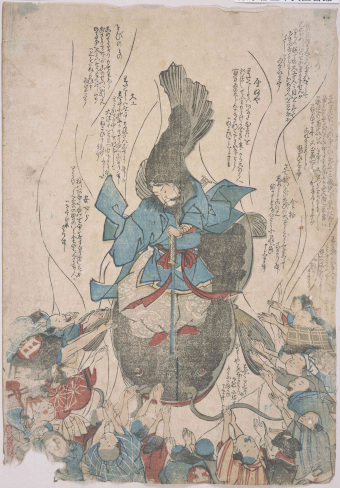
23 〔Kashima Daimyōjin Capturing a Catfish〕
Tokyo Shiryō Collection 0277-C53
This illustration shows the Kashima Daimyōjin deity capturing a catfish: a common scene in namazu-e, "catfish pictures" that featured the giant catfish purported to cause earthquakes. The Ansei Earthquake occurred in October, which is also the month when Shinto deities from all over Japan are said to gather in Izumo, so people believed the earthquake had struck while Kashima Daimyōjin was away in Izumo. Namazu-e were extremely popular around this time, functioning both as reading material and as charms to assuage people's anxieties.(35×25㎝)
24 Catfish exiles
Tokyo Shiryō Collection 0277-C28
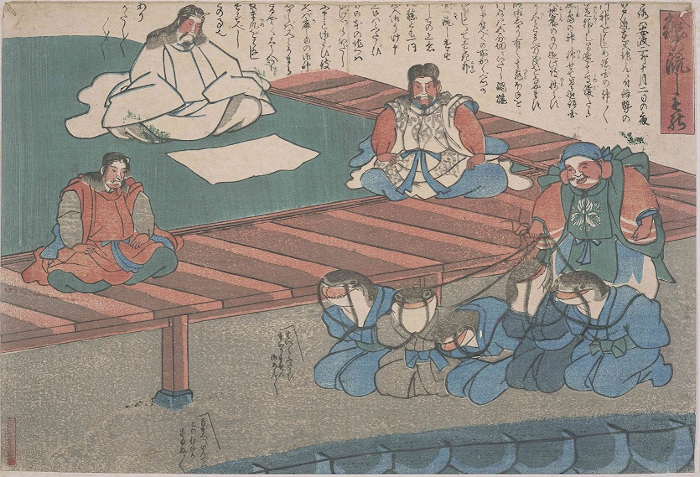
The four catfish that caused the earthquake are being judged by god. They are sentenced to exile to a foreign country.(24×35.5㎝)
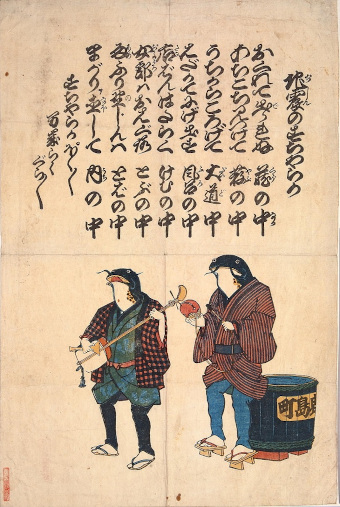
25 The Sucharaka-bushi song about the earthquake
Tokyo Shiryō Collection 5649-C3
Two catfish make a joke about the people who were hit by the earthquake with the Sucharaka-bushi song which is one of the background music in kabuki.
(37.4×25㎝)
2 Major Outbreaks of Infectious Diseases
26 Chronicle of the Cholera Outbreak of Fall 1858
Kaga Collection 273
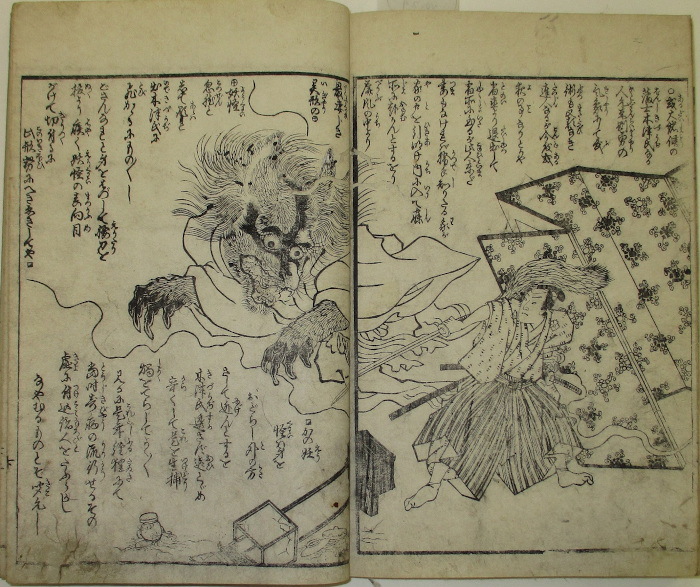
This is a volume of reportage on the cholera outbreak of 1858, produced by popular novelist Kanagaki Robun and featuring strange anecdotes collected from kawaraban news-sheets. The illustration here shows a feudal retainer by the name of Kizu who vanquished a supernatural racoon dog (tanuki) who had been trying to take advantage of the outbreak to trick people. This story shows that at the time, mysterious illnesses were considered equivalent to spirit possession.(25×17cm)
27 The Great Battle of the Vegetables and the Fish
Tokyo Shiryō Collection 5259-C36
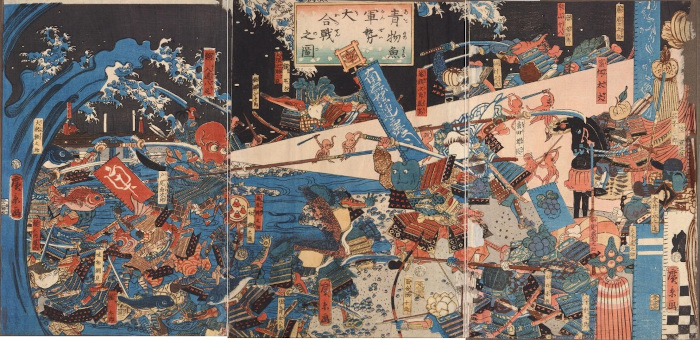
There was a nationwide cholera epidemic in 1858, the year before this illustration was published. At the time, infectious diseases were thought to originate in toxins inside living creatures, especially fish. Eating vegetables was thus considered a way of avoiding cholera, and vegetable prices rose dramatically. This illustration depicts a battled between the vegetables and the fish, a food believed to increase the risk of infection. This battle is actually a metaphor for the feuds that were going on within the Shogunate at the time. (35.5×72.5cm)
28 Measures Against Measles
Kaga Collection 3383
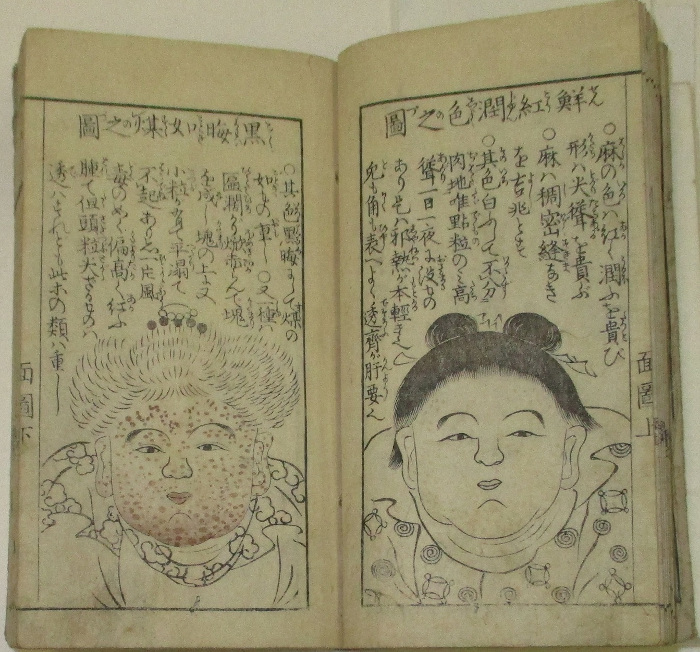
There were repeated outbreaks of measles during the Edo period. In 1862, as the era drew to a close, measles reached epidemic proportions in Edo. This medical text was published at the time of an earlier outbreak around 1824. Based on a text from China, it offers simple explanations of the symptoms, curative charms, and the like. The end of the book also explains how to deal with smallpox. (15.2×9cm)
29 Chinzei Hachirō Tametomo and the Smallpox Deity
Tokyo Shiryō Collection 778-C18
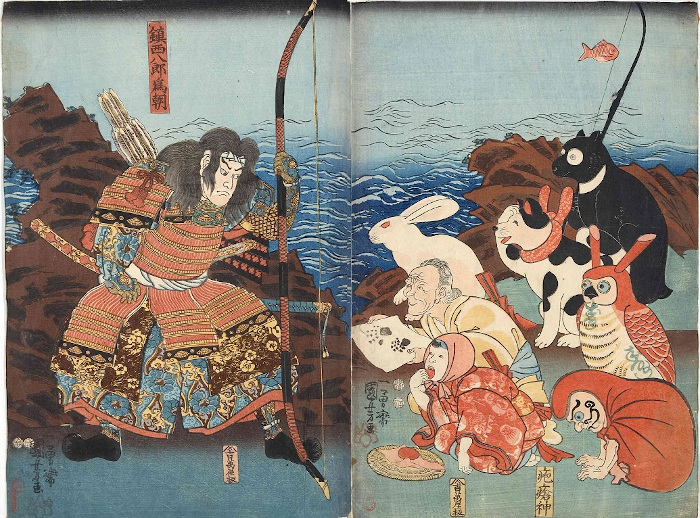
Hōsō-e, literally "smallpox pictures," were used as charms to ward off smallpox.
This picture shows the smallpox demon and papier-mâché toys given to sick children under the demon's control, together with the hero Chinzei Hachirō Tametomo, also known as Minamoto no Tametomo. Tametomo had been exiled to the island of Hachijō-jima after the Hōgen Rebellion, and a legend arose that there was no smallpox outbreak on the island because Tametomo had vanquished the smallpox demon. This resulted in Tametomo being used as the subject matter for hōsō-e like this one.(36.3×48.8cm)
30 Map of Shitaya in the Eastern Capital
Tokyo Shiryō Collection 0461-5ウ
Edo's first smallpox vaccination center was a private facility established in Otamagaike by Itō Genboku and other doctors of Dutch medicine in 1858. This zonal map shows the facility rebuilt in Shitaya, after the original facility was destroyed in a great fire. The facility was brought under the Shogunate's administration in 1860. It not only provided vaccinations but also trained doctors of Dutch medicine.
The Igakukan (part enlarged image), a Shogunate facility for training in Chinese medicine, is also visible in this map.(45.7×87.6cm)
31 〔Defeating Smallpox〕
Tokyo Shiryō Collection 778-C13
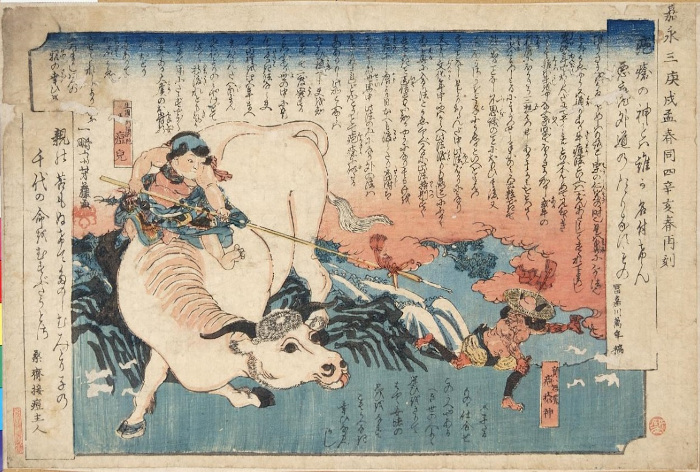
This colored woodblock print was produced to promote smallpox vaccination. It appears to have been inspired by the ideas of Kuwata Ryūsai, a doctor of Dutch medicine who administered vaccines in Edo's Fukagawa district.
It shows a child riding a white ox, with a red spots left by the vaccination clearly visible on his arm. At the time, smallpox was thought to be the work of the gods and was even an object of worship. This picture denies that belief, labelling the smallpox deity as "in truth, a demon."
(24.5×38.5cm)
